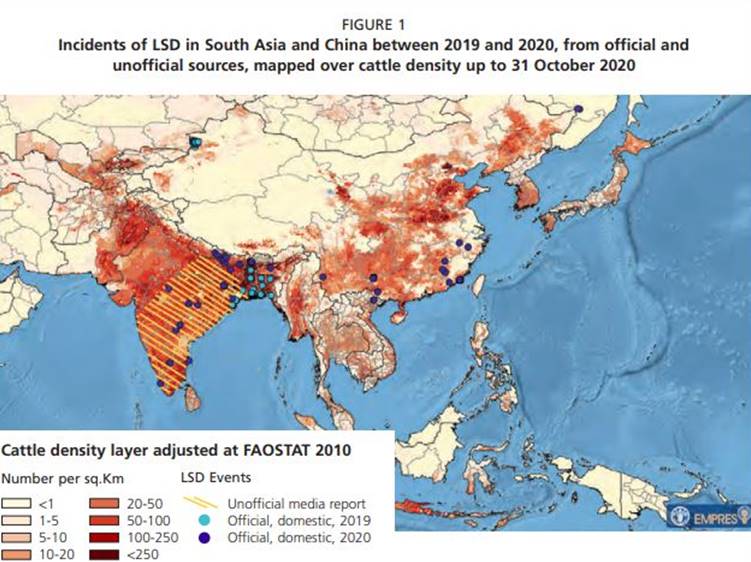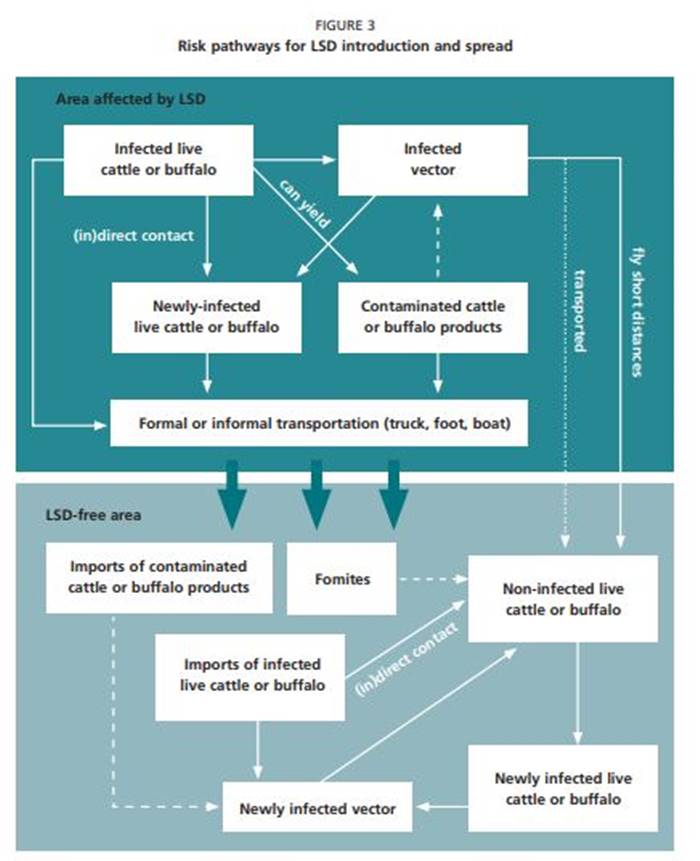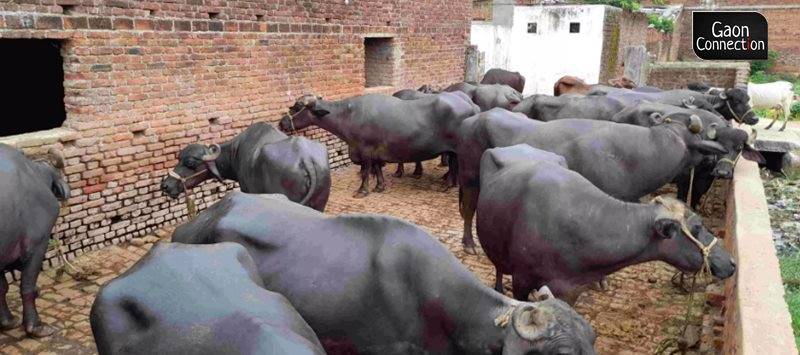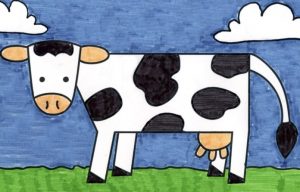
The sight of lumps on his cow’s skin worries 46-year-old Tarun Chauhan. A resident of Pali village in Uttar Pradesh’s Baghpat district, the cattle rearer has some sound reasons to be afraid of.
“In the neighbouring village, I know a farmer whose cow died due to similar symptoms,” Chauhan told Gaon Connection.
What Chauhan is anxious about is a viral malady commonly known as ‘Lumpy skin disease’ and affects cows and buffaloes.
The disease was reported for the first time in India in West Bengal in 2019. Thus, within two years, the viral outbreak has reached virtually every state that has a significant cattle population.
The ability to produce milk in the cattle infected with this disease gets seriously compromised.
“Four months back, I had bought this sahiwal (a breed) cow for Rs 51,000 from Karnal in Haryana. For the last couple of days, I have been witnessing these strange lumps all over the animal. The head, neck, limbs and udder are worst affected,” Chauhan further informed.

“When I approached a jaanvaron a daaktar (veterinarian) to get my cow treated, I got to know that it’s been infected by a disease called lumpy skin disease,” he added.
The states of Tamil Nadu, Odisha, Karnataka, Kerala, Chhattisgarh and Madhya Pradesh are worst-affected while isolated cases of this disease have also been found in Uttar Pradesh, Uttarakhand, Haryana, Rajasthan, Bihar, Punjab, Gujarat, Jharkhand, and Maharashtra.
Disease can turn fatal in 1/10 infected cattle
Last month, when some cows in Uttarakhand’s Udham Singh Nagar manifested symptoms of the disease, the chief veterinary officer (CVO) of the district sent the samples to Bareilly-based Indian Veterinary Research Institute (IVRI) where it was confirmed to be lumpy skin disease.
Gopal Singh Dhami, the Udham Singh Nagar CVO told Gaon Connection that the disease is presently in control in Uttarakhand.

“Inter-state movement of animals is a contributing factor behind the outbreak,” Singh added.

Meanwhile, according to a paper published by the Food and Agriculture Organization of the United Nations (FAO) in 2020, the disease was first observed in Zambia in 1929.
“Since the first observation of the disease in Zambia in 1929, LSD has spread progressively and extensively throughout Africa, the Middle East, Southeastern Europe, Central Asia, and more recently South Asia and China,” the paper titled Introduction and spread of lumpy skin disease in South, East and Southeast Asia mentioned. The fatality rate of the disease is around 10 per cent.
Vaccine research underway but substitutes available
The joint director of IVRI also told Gaon Connection that although a vaccine for the disease is still in the development phase, the cattle is at present vaccinated with the goat-pox vaccine to inoculate against the lumpy skin disease.
“Animals manifesting fever or any other symptoms of infection should be tied away from healthy animals as a precautionary measure and these sick animals should be tested as soon as possible,” Singh added.As per the National Dairy Development Board data, in 2012 there were 190.9 million cattle, 108.7 million buffalo and 133.3 million milch cattle in India. Their numbers increased to 192.5 million cattle, 109.9 million buffalo and 136.4 million 750 milch cattle in 2019.

















